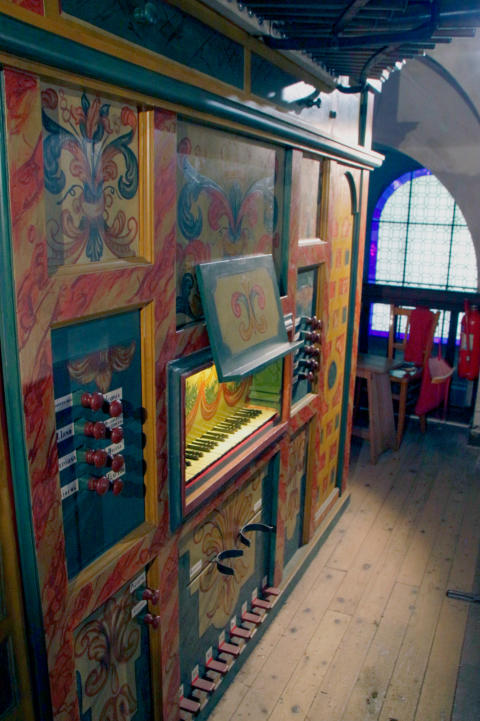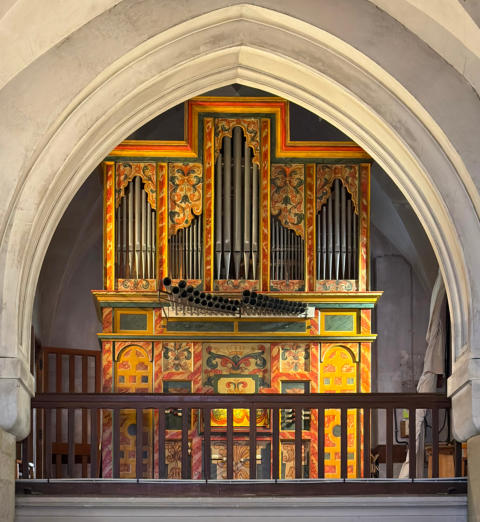


ORGANS OF PARIS © 2025 Vincent Hildebrandt HOME ALL ORGANS
Fresnes, Saint-Eloi
Pl. de l'Église, 94260 Fresnes1768 - Joseph de Fuentes y Ferrer (1)
2014 - Frédéric Desmottes (5)
I/11 - Transmission mécanique
Composition


The organ, built in 1768 for the convent of Buenafuente
del Sistal, never having undergone any transformation,
was restored in 2014 by the workshop of the Desmottes
brothers with a view to its installation in the church of
Saint-Éloi.
The instrument is typically Castilian in its workmanship.
It has a 45-key keyboard with a short octave, bone-
decorated ebony feints, and bone-plated steps.
The organcase, with a central panel and four side panels,
is entirely decorated with tempera scrolls in red and blue
tones; the boundary between the upper and lower
bodies of the organcase bears two rows of chamade
pipes, corresponding to the Bajoncillo and Clarín half-
registers.
All registers are cut in bass and above between C3 and
C#3.
The façade pipes correspond to the 4' Watch register.
The stops are old (Joseph Fuentes y Ferrer, 1786), except
for the Trompeta Real 8' and the Cimbala IIIrgs, which are
completely new (Desmottes, 2014). They are made of
metal with the exception of the first 8 basses of the 8'
Violin (Bourdon 8', from C 1 to Bb 1), which are made of
wood.
Pipes cut to tone. Fabric alloy composed of 52% tin and
48% lead. The bevels of the pipes are made of hammered
lead, without teeth.
It is tuned to 392 Hz.
The two wedge-shaped bellows are new and produce a
wind pressure of 65 mm.
Source
The church of Saint-Éloi was built in the twelfth
century on the site of a very old oratory, located on
the edge of the seigneury of Cottinville, probably on
the site of the current chapel of the Virgin. The village
of Fresnes was then erected as a parish in the
thirteenth century from the transfer of property to the
chapter of Notre-Dame in 1211 and became "Sanctus
Elipius de Fraxinis" attached to the deanery of Linas.
It was at this time that the church consecrated to
Saint-Éloi, bishop of Noyon, Dagobert's minister, was
built. The origin of the church of Saint-Éloi is therefore
very old, but the successive restorations it has
undergone no longer allow us to assign it a very
specific style. Moreover, only the choir belongs to the
time of the foundation. Everything else was rebuilt in
the sixteenth century.
The bell of which the Count of Clermont and his
friend, Mademoiselle Leduc, were the godparents in
1749, still exists.
The church continued to suffer alternately
deterioration, repairs and works, especially in 1891.
Most of its furniture and all of its stained glass
windows date from the nineteenth century.
In 1973, the west, east and south facades of the
church were restored.
Source
Organist
Anne-Marie Blondel
Concerts
Frequently
Masses with organ
A second church was built in Fresnes in 1958: Notre-
Dame-de-la-Merci. It has become the most frequented
church, so that Saint-Éloi is only used for weekday
services, funerals, and a few weddings.
Video
Anne-Marie Blondel
Photos: Jeroen de Haan
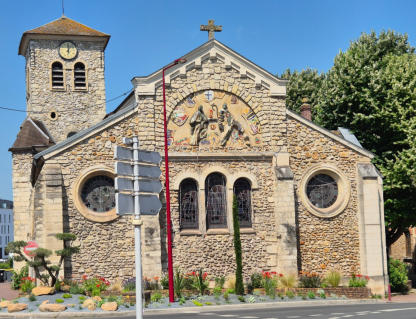
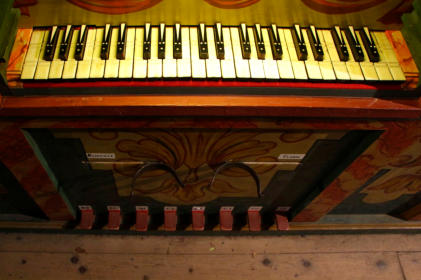
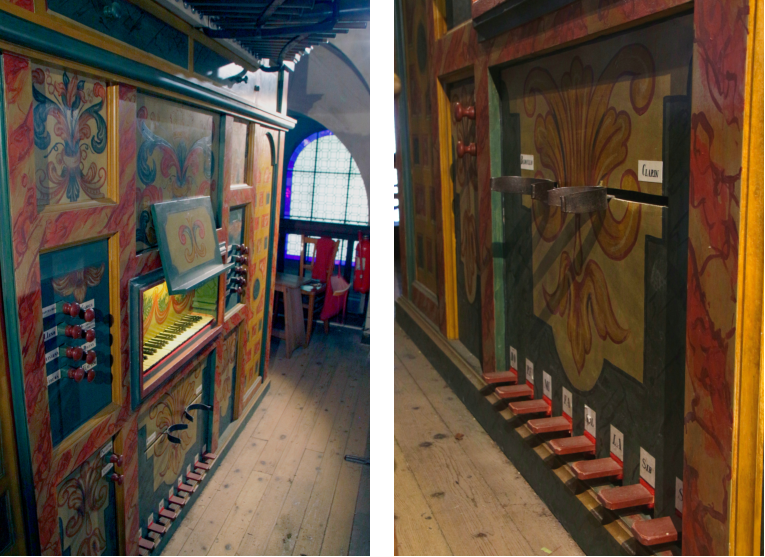
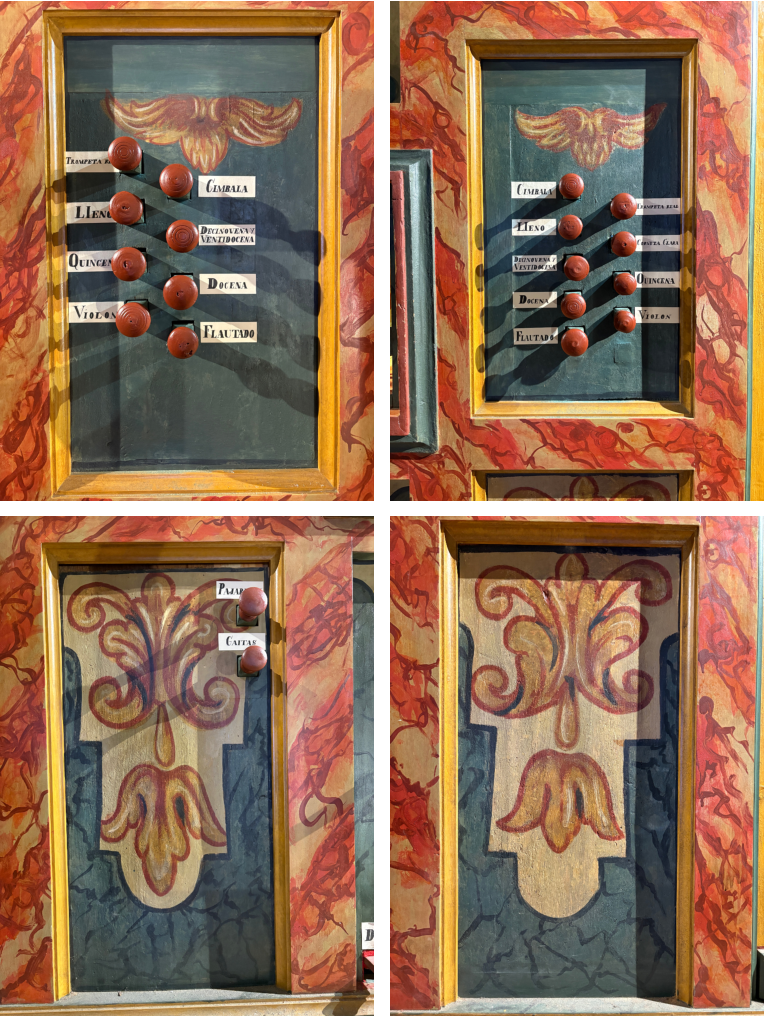
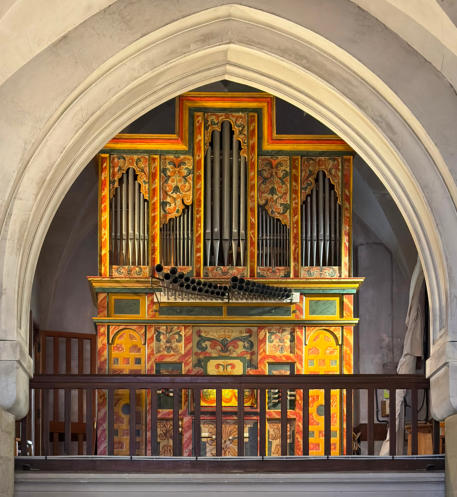
Organs of Paris
Fresnes, Saint-Eloi
Pl. de l'Église, 94260 Fresnes1768 - Joseph de Fuentes y Ferrer (1)
2014 - Frédéric Desmottes (5)
I/11 - Transmission mécanique
Composition
ORGANS OF PARIS © 2025 Vincent Hildebrandt ALL ORGANS
The organ, built in 1768 for the convent of Buenafuente del
Sistal, never having undergone any transformation, was
restored in 2014 by the workshop of the Desmottes brothers
with a view to its installation in the church of Saint-Éloi.
The instrument is typically Castilian in its workmanship.
It has a 45-key keyboard with a short octave, bone-decorated
ebony feints, and bone-plated steps.
The organcase, with a central panel and four side panels, is
entirely decorated with tempera scrolls in red and blue tones;
the boundary between the upper and lower bodies of the
organcase bears two rows of chamade pipes, corresponding to
the Bajoncillo and Clarín half-registers.
All registers are cut in bass and above between C3 and C#3.
The façade pipes correspond to the 4' Watch register.
The stops are old (Joseph Fuentes y Ferrer, 1786), except for
the Trompeta Real 8' and the Cimbala IIIrgs, which are
completely new (Desmottes, 2014). They are made of metal
with the exception of the first 8 basses of the 8' Violin (Bourdon
8', from C 1 to Bb 1), which are made of wood.
Pipes cut to tone. Fabric alloy composed of 52% tin and 48%
lead. The bevels of the pipes are made of hammered lead,
without teeth.
It is tuned to 392 Hz.
The two wedge-shaped bellows are new and produce a wind
pressure of 65 mm.
Source
Organist
Anne-Marie Blondel
Concerts
Frequently
Masses with organ
A second church was built in Fresnes in 1958: Notre-Dame-de-
la-Merci. It has become the most frequented church, so that
Saint-Éloi is only used for weekday services, funerals, and a few
weddings.
Video
Anne-Marie Blondel
Photos: Jeroen de Haan
